Astronomical events of the month of February 2023
For the second month of 2023, with skies still clear, before starting with the astronomical events, we are going to remember some planetary alignments; we return to the challenge of the month, which consists of locating a comet; we will have the opportunity to observe a meteor shower; likewise, we will get excited about a couple of very close galaxies from the famous Messier Catalog and we will end the month with a couple of approaches of the Moon with Jupiter and Mars. Of course, we will have the ephemeris of our satellite, the Moon.
Remembering the alignment of 8 planets
A planetary alignment is popularly considered as the observation of the planets in a straight line that, astronomically speaking, we know as the ecliptic. It is more or less frequent to find the alignment of two or three planets in the sky, but as we increase the number of planets involved, this phenomenon occurs more difficultly, since, due to the orientation and inclination of the orbits of the planets in the solar system can never align perfectly. The alignment of eight planets (including Pluto, today called the dwarf planet) occurred in the year 949 of our era and they will not be again until May of the year 2492. The alignment of 5 planets occurs approximately every half century; the previous one was observed on February 4, 1962, the day on which there was also a solar eclipse, and the next one will take place on September 7, 2040.
It is worth mentioning that during the alignment the planets are located approximately in a straight line, strictly speaking, but there are approaches of the planets in which they share an astronomical coordinate, Right Ascension, which is known as "Conjunction", although not exactly coincide in a straight line with respect to the visual, or, there is simply an apparent approach in the sky between them, as in 2004 and 2022.
As in any other astronomical phenomenon that we wish to observe, it is recommended to get as far away as possible from light pollution, have clear skies and horizons, and appropriate clothing. No optical instrument is required to enjoy these planetary close-ups.
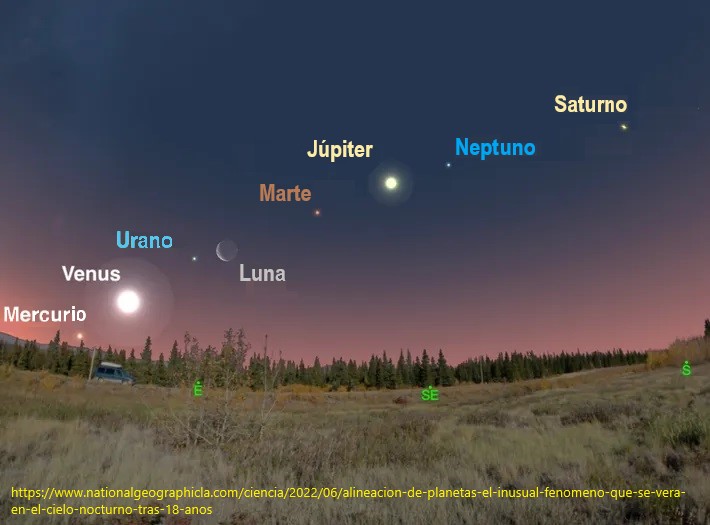
Comet C/2022 E3 (ZTF) in perigee
This comet was recently discovered by a celestial monitoring program of the Monte Palomar observatory (USA) "Zwicky Transient Facility", on March 2, 2022. The comet has a quasi-parabolic orbit with a perihelion, closest approach to the Sun, of 1.16 astronomical units (AU), as of January 12, 2023, and a perigee, closest approach to Earth, of only 0.28 AU, on February 1, 2023.
The comet is expected to reach at least a brightness of 6.3 magnitudes from 19:19 to 03:08, with a maximum at 21:27, at 45° above the northern horizon, with coordinates AR 06h 30m 20s and DEC 72°42´, in the direction of the constellation of Camelopardalis, the Giraffe. It will be visible with binoculars or a small telescope, but we will have some interference from a crescent Moon, which increases the difficulty of our challenge.
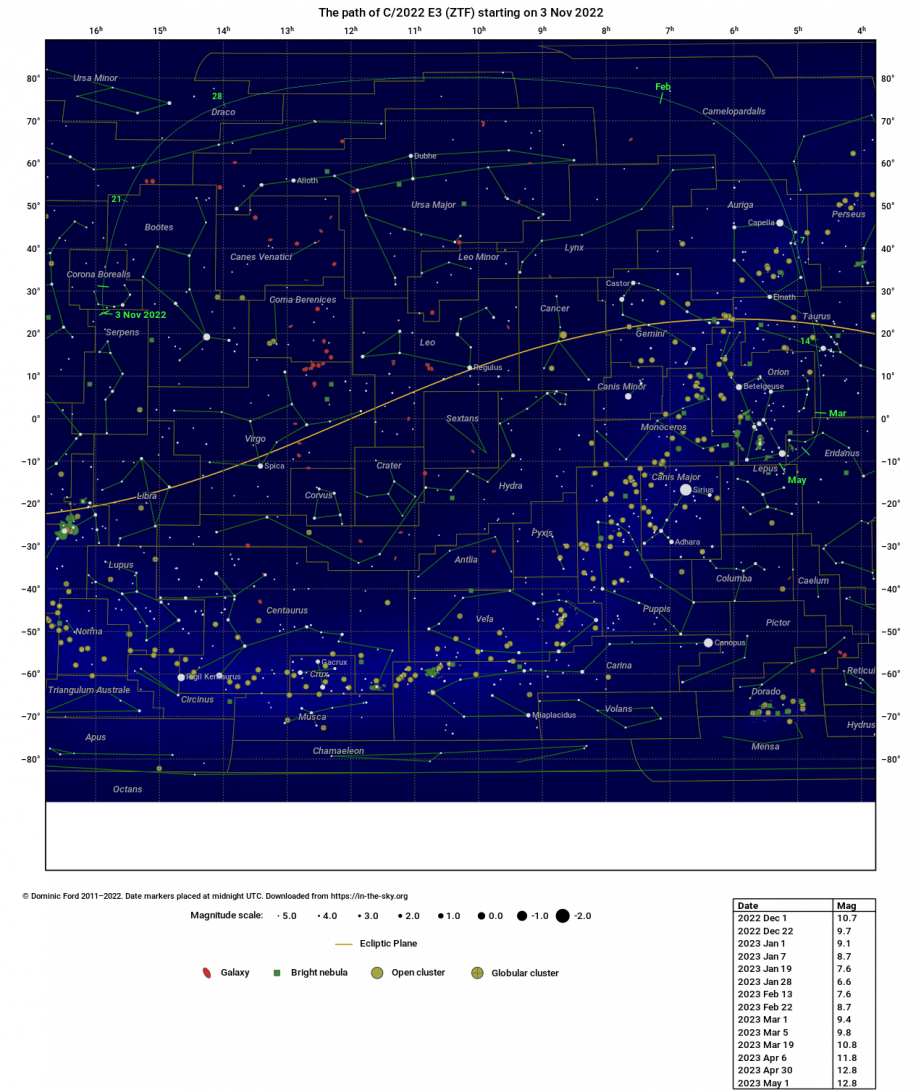
A rain in the southern region
The ?-Centaurid meteor shower will be active between January 28 and February 21, with its maximum on February 8. The maximum observable rate is variable, with at least 6 meteors per hour. The radiant is in the direction of the constellation of Centaurus, an extensive southern region that hosts the richest and most wonderful celestial associations, located to the north of the Crux (the Southern Cross). The object responsible for the rain has not been fully identified. The light of the almost full Moon will introduce some interference, however, if we have a dark and clear horizon, we may be able to capture some fleeting ones. The best time will be at dawn on the 8th, towards the southern part of the celestial sphere.
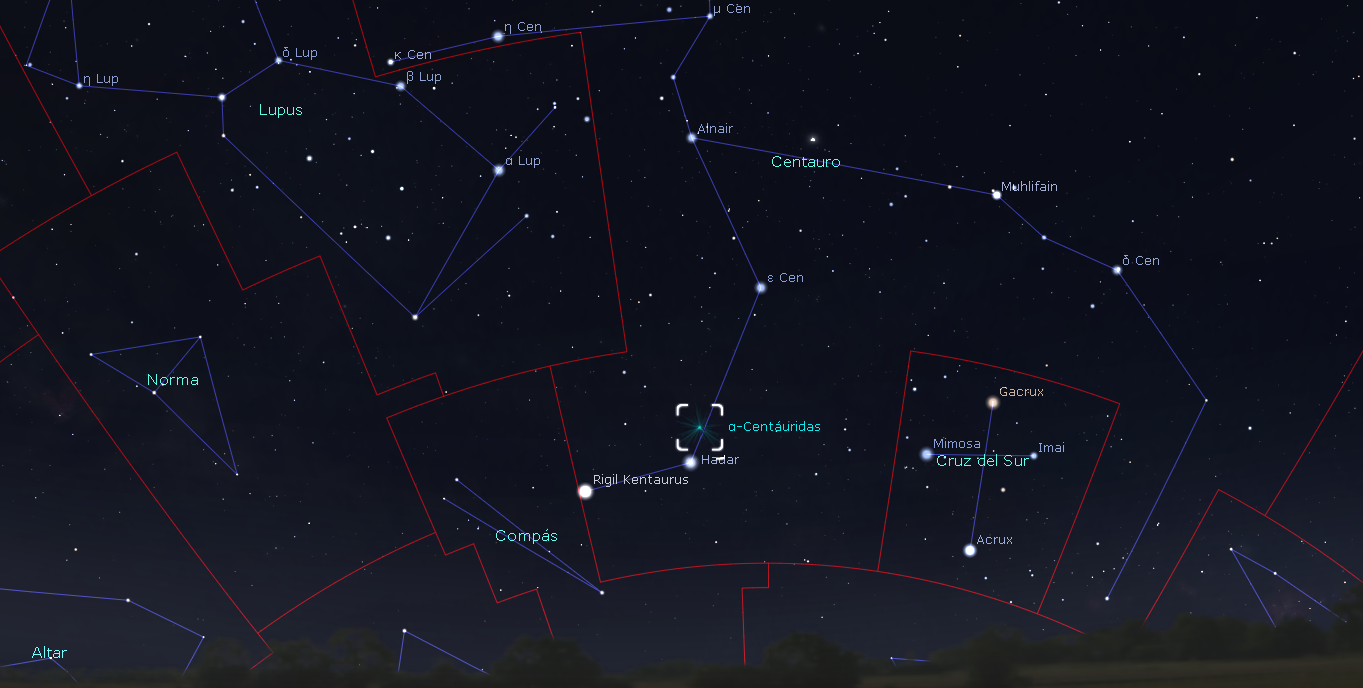
M81's gravitational system
The Bode Galaxy and the Cigar Galaxy, technically M81 and M82, respectively, are two galaxies very close in the sky, separated by only about 150,000 light-years and observable in the constellation Ursa Major. The galaxy M81, along with its neighbor M82, were discovered in 1774 by Johann Elert Bode, who described them as "nebulous blobs." These nebulous spots were later observed independently by Pierre Méchain in 1779 and included in the Messier catalog in 1781.
Galaxy M 81 has an almost perfect spiral structure, with a bright yellowish bulge and extensive bluish arms, it contains approximately 250 billion stars, being slightly smaller than the Andromeda galaxy. M81 together with M82 form the "M81 gravitational system", both are located about 12 million light years away from Earth. Bode's galaxy is one of the easiest galaxies to observe, due to its magnitude of 6.9 and is one of the favorites for amateur astronomers. It is possible to find it with binoculars or with small telescopes, in the direction of the Ursa Major constellation, towards the northeast part of the celestial sphere, preferably around February 20, when we have a new Moon.
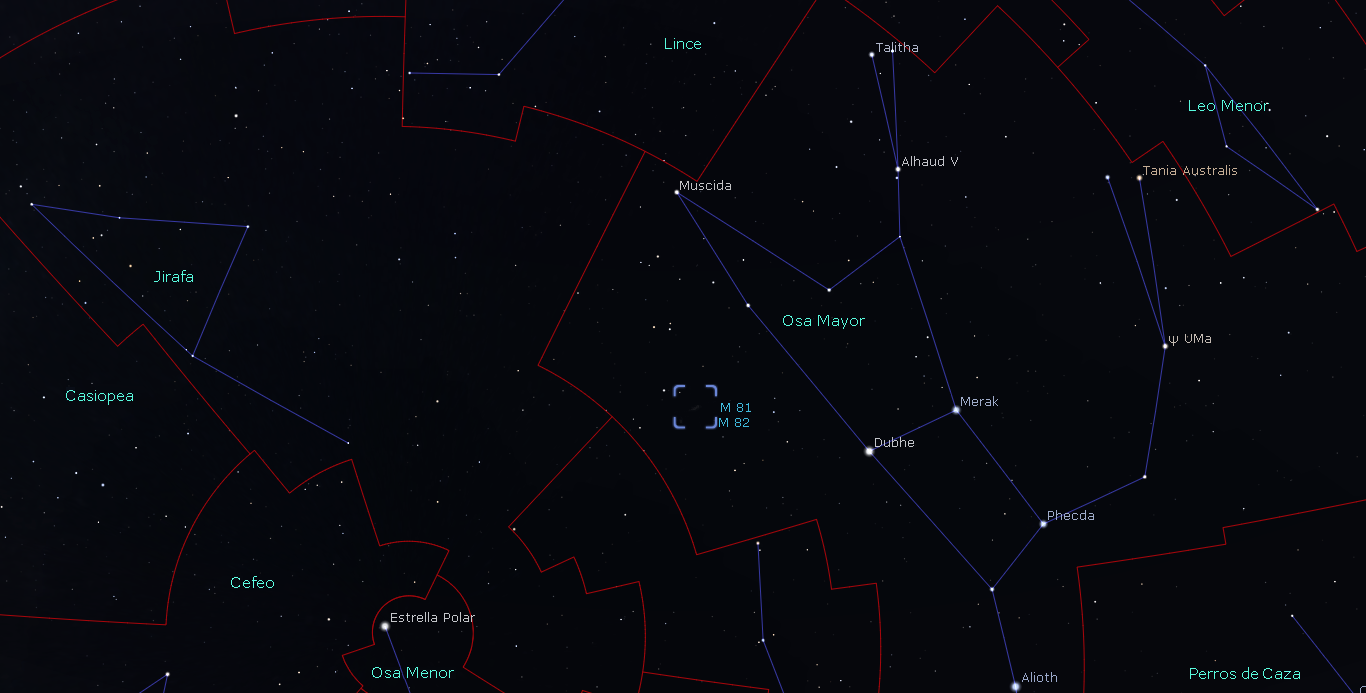
Conjunction of the Moon with the giant Jupiter
It is said that there is a "conjunction" of two or more celestial bodies when they share one of their celestial coordinates, Right Ascension, although they do not exactly coincide in a straight line with respect to the visual. On February 22 at 4:00 p.m. Central Mexico time, we will have the conjunction of the Moon with the giant Jupiter, but the pair will be visible from dusk and will be present most of the night; the Moon will be in the direction of the constellation of the Whale passing just 1° 11' south of Jupiter, in the direction of the constellation of Pisces.
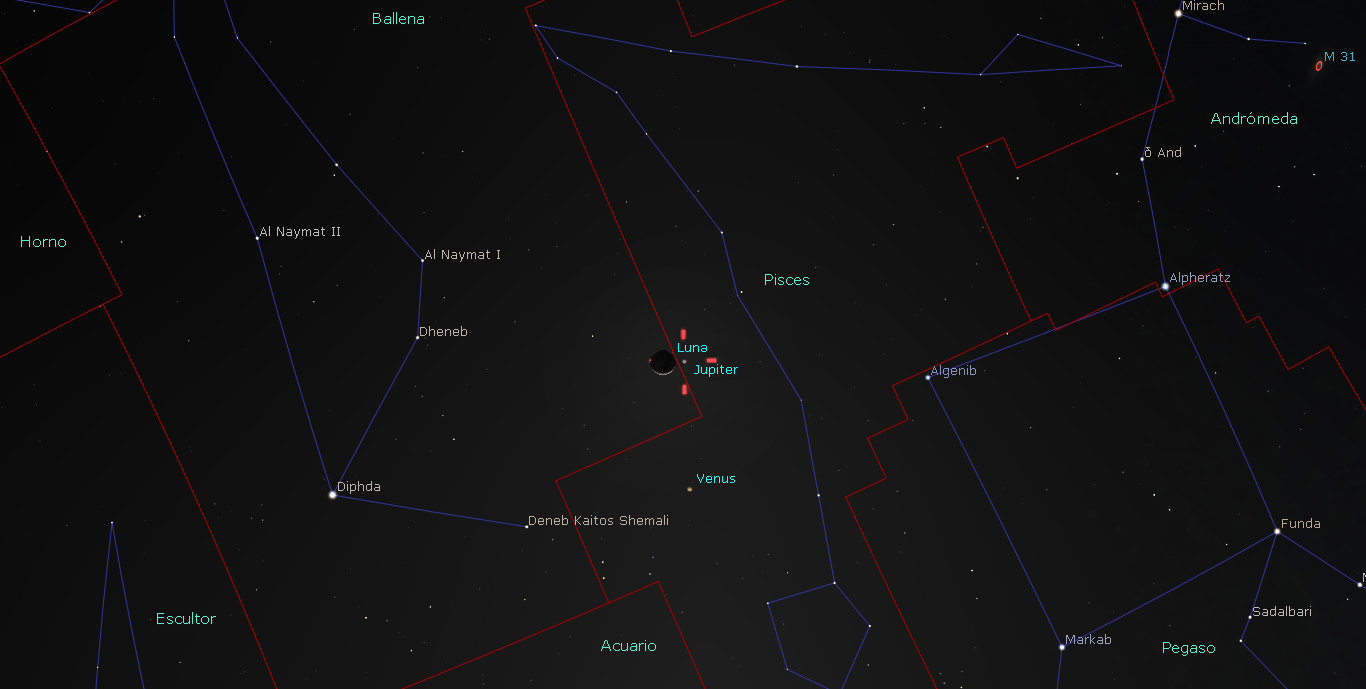
Conjunction of the Moon and Mars
On the night of February 27 at 10:30 p.m., central Mexico time, the Moon and Mars will be in conjunction, that is, they will share one of their astronomical coordinates, Right Ascension, but they will also be closer to each other. Our satellite will pass at 1° 04' north of Mars, in the direction of the constellation Taurus.
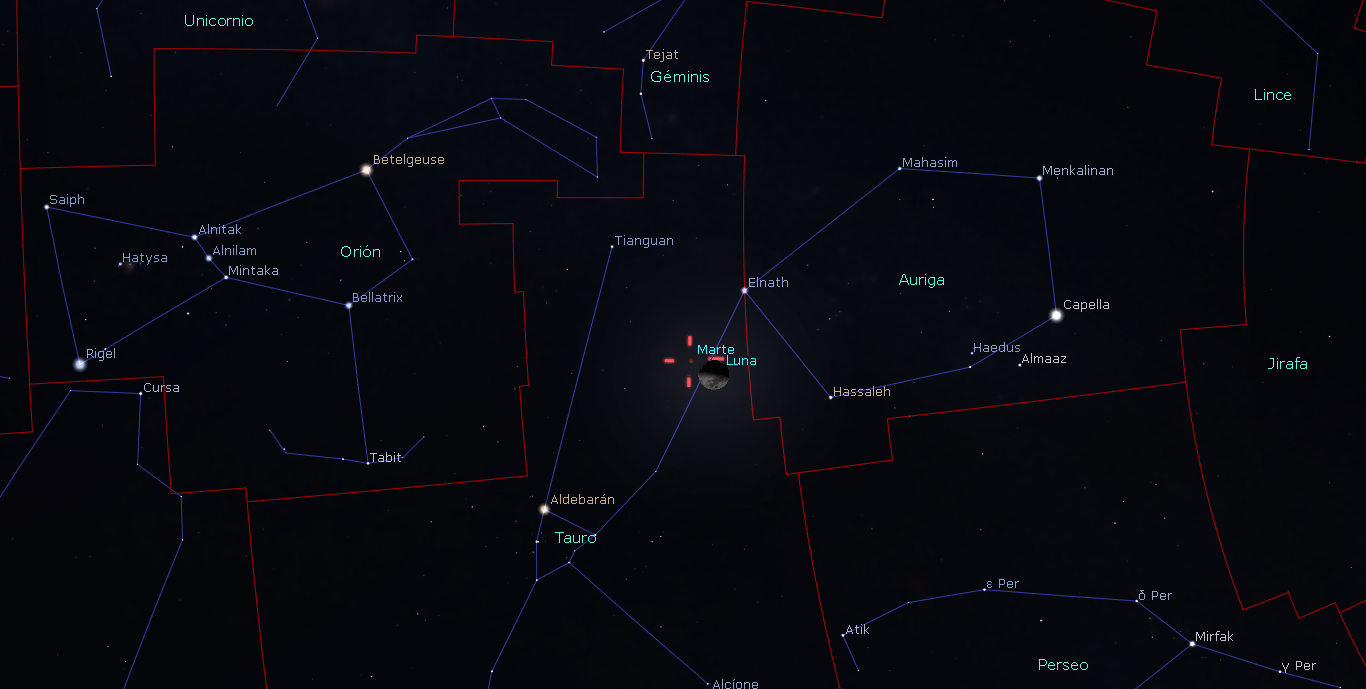
Phases of the Moon (Central Mexico time).
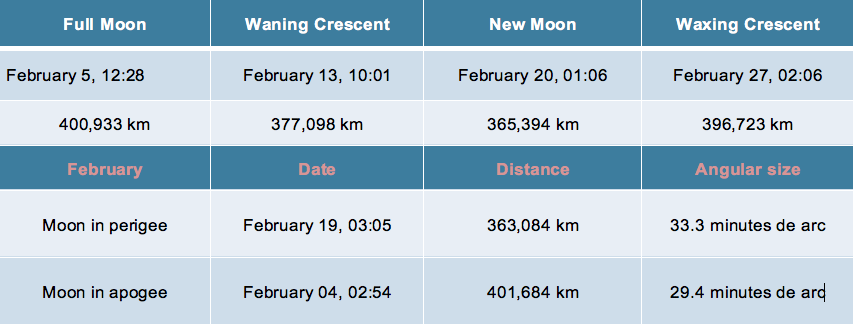
Watch the video: https://youtu.be/kFNIWh-yCg0
Contacts:
Dr. Agustín Márquez Limón (amarquez@inaoep.mx), Coordinación de Astrofísica-INAOE
Dr. Vicente Hernández Hernández (planetariodecozumel@gmail.com), Red de Planetarios del Estado de Quintana Roo
Dr. Raúl Mújica García, (rmujica@inaoep.mx), Coordinación de Astrofísica-INAOE y Noche de las Estrellas
Luis Enrique Erro # 1, Tonantzintla, Puebla, México, Código Postal 72840, Tel: (222) 266.31.00, difusion@inaoep.mx
This work is licensed under a Creative Commons Attribution-NonCommercial-NoDerivs 2.5 Mexico License.


